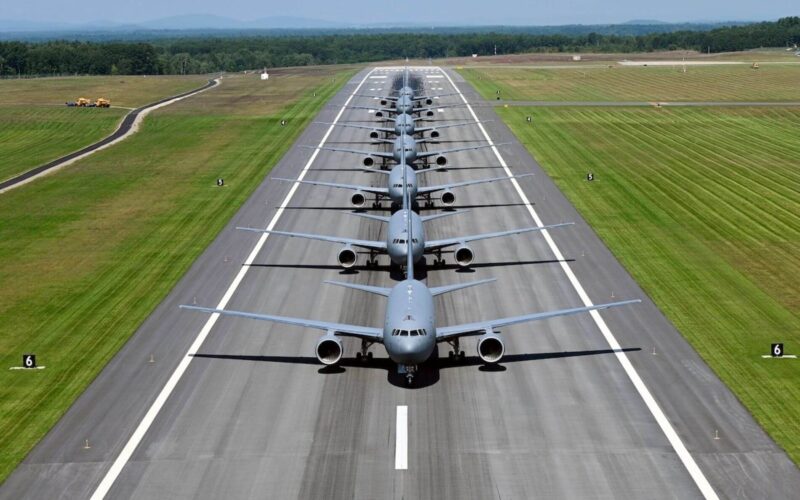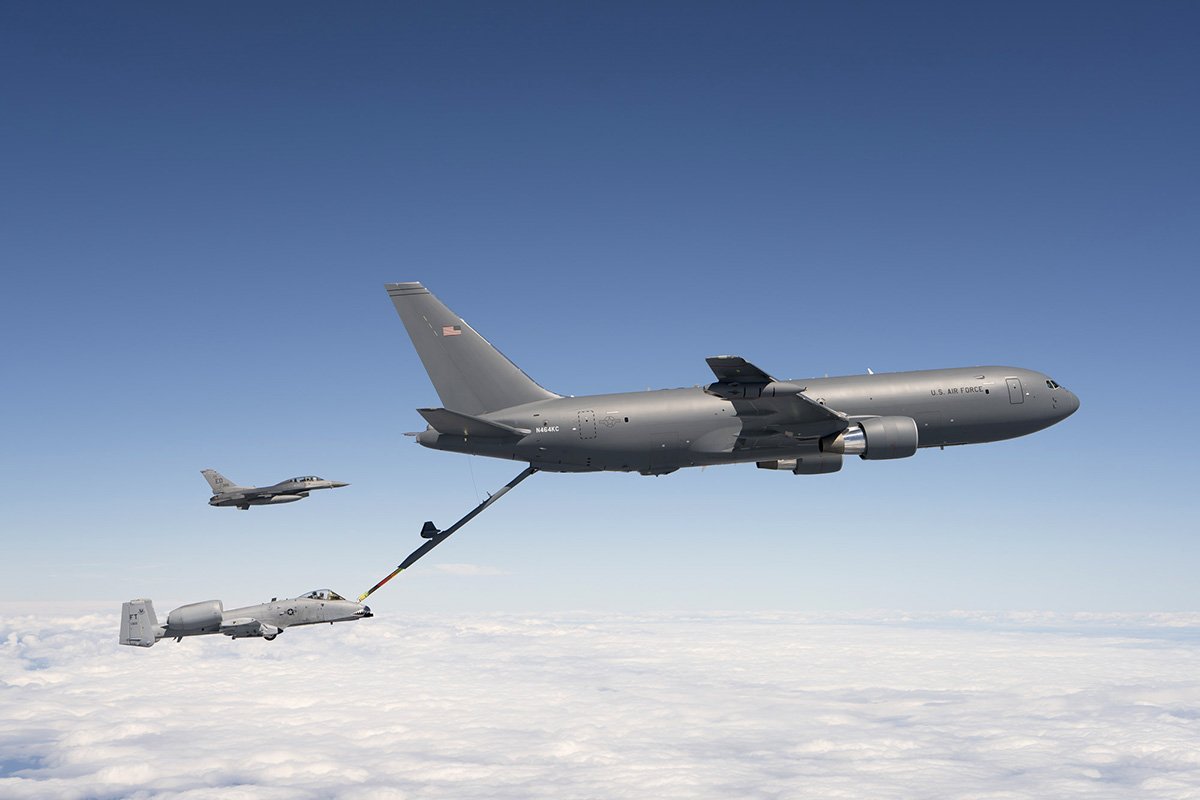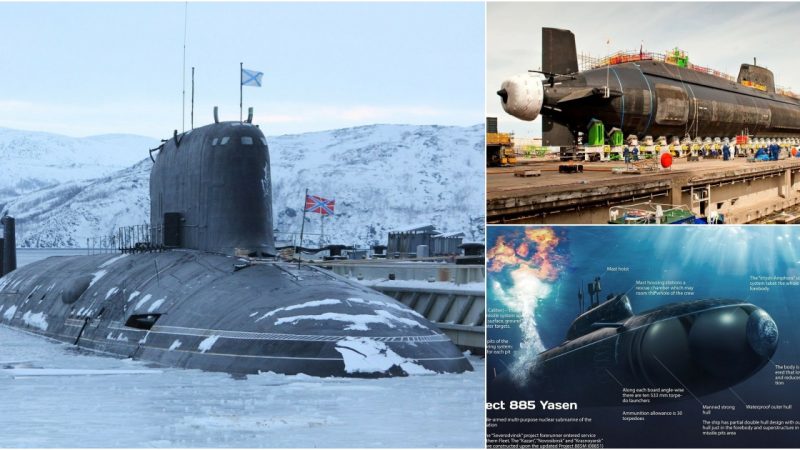The Boeing Co., headquartered in Seattle, Washington, has been awarded a $2,255,625,408 modification (P00289) to previously awarded contract FA8625-11-C-6600 for KC-46A U.S. Air Force Production Lot 9 aircraft, subscriptions, and licenses. Work will be performed in Seattle, Washington, and is expected to be completed by August 31, 2026. Fiscal 2023 procurement funds in the amount of $2,255,625,408 are being obligated at the time of award. The contract modification provides for the exercise of an option for an additional quantity of 15 KC-46A Pegasus aerial refueling aircraft, subscriptions, and licenses being produced under the basic contract. The U.S. Air Force Lifecycle Management Center, Wright-Patterson Air Force Base, Ohio, is the contracting activity.
Boeing KC-46 Pegasus Aerial Refueling and Transport Aircraft
The Boeing KC-46 Pegasus is an American military aerial refueling and strategic military transport aircraft developed by Boeing from its 767 jet airliner. In February 2011, the tanker was selected by the United States Air Force (USAF) as the winner in the KC-X tanker competition to replace older Boeing KC-135 Stratotankers. The first aircraft was delivered to the Air Force in January 2019. The U.S. Air Force intends to procure 179 Pegasus aircraft by 2027. The 767-2C’s first flight took place on December 28, 2014; it followed the 767-2C’s first flight, which was based on the 767-300F’s wing, gear, cargo door, and floor, with the 767-400ER’s digital flight deck and flaps. Rather than using a single boom operator station, the aerial refueling operator’s station is integrated into the rear of the flight deck. On 24 January 2016, the KC-46 successfully refueled an F-16 for the first time, test refueling several other Air Force aircraft, including a C-17, F/A-18, A-10, and AV-8B.
Boeing KC-46A Refuels an A-10 Thunderbolt II
U.S. Air Force Boeing KC-46 Pegasus aerial refueling and transport aircraft. (U.S. Air Force photo by Staff Sgt. Brittany E. A. Chase)
The KC-46 Pegasus is a variant of the Boeing 767 and is a wide-bodied, low-wing cantilever monoplane with a conventional empennage featuring a single fin and rudder. It has a retractable tricycle landing gear and a conventional empennage. The Pegasus is powered by two Pratt & Whitney PW4062 turbofan engines, one mounted under each wing. It has been described as combining “the 767-200ER’s fuselage, with the 767-300F’s wing, gear, cargo door, floor, with the 767-400ER’s digital flight deck and flaps.” There are ten under-wing fuel pods, which can carry 212,299 pounds (96,297 kg) of fuel, 10 percent more than the KC-135, and 65,000 pounds (29,000 kg) of cargo. Survivability is improved with infrared countermeasures and the aircraft has limited electronic warfare capabilities. It uses manual flight controls, allowing unrestricted maneuverability to avoid threats anywhere in the flight envelope.
US Air Force KC-46A Performs First Operationally-Tasked Combat Refueling Sortie
U.S. Air Force Boeing KC-46 Pegasus aerial refueling and transport aircraft. (U.S. Airman 1st Class Brendan Beitzel)
The rear compartment can carry 212,299 pounds (96,297 kg) of fuel, 10 percent more than the KC-135, and 65,000 pounds (29,000 kg) of cargo. Survivability is improved with infrared countermeasures and the aircraft has limited electronic warfare capabilities. The rear compartment can also be used in an aero-medical evacuation for 54 patients (24 on litters). The rear compartment can also be used for cargo or to carry 58, or 18 pallets in cargo configuration. The rear compartment can also be used in an aero-medical evacuation for 54 patients (24 on litters). The KC-46A can carry 212,299 lb (96,297 kg) of fuel, 10 percent more than the KC-135, and 65,000 lb (29,000 kg) of cargo. Survivability is improved with infrared countermeasures and the aircraft has limited electronic warfare capabilities. It uses manual flight controls, allowing unrestricted maneuverability to avoid threats anywhere in the flight envelope.
In conclusion, the Boeing KC-46A Pegasus is a versatile military aircraft that serves as an aerial refueler and transport aircraft. It is designed to enhance the capabilities of the U.S. Air Force and provides essential support for various mission profiles.








